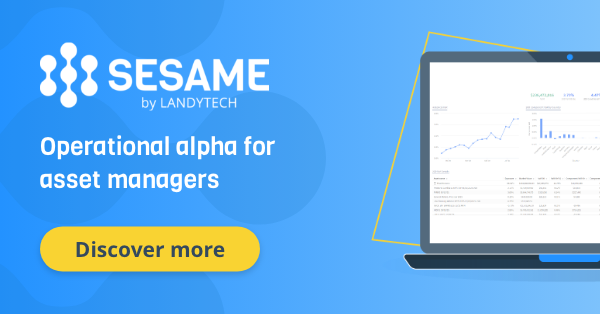The ultimate guide to investment reporting in 2024

Investment reporting gives valuable insight into investment performance and in-depth analysis to empower decision makers, whether that be portfolio managers, asset owners or their advisers. Reporting should provide all stakeholders with the useful and actionable data they need to make informed investment decisions.
This is particularly true for end users, often the asset owners, who want to visualise their holdings in a clear and concise manner to understand how their portfolio is performing, and their exposure to risk. Whilst portfolios can range from simple to extremely complex, there is one constant: the need to deliver investment reporting in a clear and concise way.

The importance of investment reporting
The quality and accessibility of the reporting also plays a vital role in client retention across the investment management spectrum. Firms that can deliver critical information in a timely manner, whilst providing enhanced insights based on their analysis, are in a much better position to forge deeper relationships with clients.
Whilst clients are likely to stay with funds that are providing generous returns (a goal investment reporting helps achieve), during bouts of underperformance, transparent investment reporting and a well-documented risk process can go a long way to providing confidence that any underperformance is temporary. This is particularly true for strategies that are prone to volatility or take a full cycle to deliver.
The importance of reporting to both demonstrate value in the good times but also reassure around underperformance is why it should form the bedrock of client relations at any investment firm.

The main challenges of investment reporting
To date, investment reporting has largely been a means to deliver historical information, communicated on a periodic basis. Moving forward, investment reporting is becoming the bedrock of portfolio management and client relations. In a fully digitalised and automated process, reporting can become so much more than just stale, one-way broadcasting. It can redefine client experience.
Increased competition and industry consolidation makes delivering – and proving – higher returns more important than ever, requiring advanced analytics and reporting.
Across the investment management space there are numerous reporting challenges faced by asset managers, family offices and trustees. We have broken down some of the challenges faced by these three groups below.
Challenges faced by Asset Managers
- Consolidating data from PMS, administrators, prime brokers, data vendors
- Efficient management of regulatory reporting requirements
- Timely handling of client requests
- Meeting institutional risk standards
- Unintuitive risk platforms
Challenges faced by Family Offices
- Poor coverage across liquid and illiquid assets
- Difficulties viewing complex and changing ownership structures
- Producing sophisticated analytics
- Timeliness of reports
Challenges faced by Fiduciaries
- Consolidating data from multiple sources
- Manual book-keeping
- Timely handling of client requests
- Relying on outdated information

Types of investment reports
Client reporting
The quality of client investment reports plays a vital role in both attracting and retaining clients.
Before subscribing to a fund, allocators will want a clear overview of the investment objective, the risk level, costs, past performance and holding details. Much of this information can be found in an investment factsheet.
Once invested in a fund, allocators will then want a clear overview of the performance of the fund at regular intervals, with insights into what the contributing factors have been to overall investment performance.
The transparent way to retain capital
Client reporting can be an opportunity for the investment manager to present positive returns, but when investments have not performed as planned; transparent reporting can go a long way to alleviating client concerns, enabling managers to highlight evidence that any underperformance will be temporary.
Client reporting can also give UHNW families a holistic view of their wealth whilst gaining an insight into how their allocation of assets is performing and their overall returns, whether that be traditional equities, alternative investments, or non-bankable assets.
Performance reporting
Performance reports give investors and advisers the information they need to make well-informed decisions about whether a fund’s risk vs reward relationships are appropriate to their specific needs. The best performance reports give up-to-date information about fund performance in a consistent, accessible, and understandable manner.
A typical investment performance report should clearly present the performance of the entity vs the designated benchmark against given time intervals (MTD, QTD, YTD), in addition to calculation of the risk-adjusted return.
Risk reporting
Regulatory obligations have increased exponentially in recent years and now asset managers are expected to measure and report on risk in much more detail to both clients and regulators. Examples include: VaR, stress testing and liquidity, scenario analysis, and exposure.
Regulatory reporting
Investment firms are required to submit information to the regulator to show compliance with certain regulations. As time has gone on, the level of reporting and data these regulators require has increased and firms burdened with legacy systems and limited resources often find it challenging to meet their obligations.
The frequency at which firms needs to send the data differs between regulation, but there is one constant: the need to find a more efficient way to produce these reports.
To date, there has been a reluctance to pour resources into making regulatory reporting more efficient due to a perceived lack of ROI. But with the demands of regulators unlikely to decrease, saving time by automating this process is something investment managers are having to get on board with. Examples of regulatory regimes include:
- UCITS
- AIFMD
- MiFID
- EMIR
ESG reporting
In recent years, there has been an explosion in investment in ESG (Environmental, Social, Governance) assets. However, with this growth has come significant data and reporting challenges. The complexity and costs of ESG implementation have risen, and allocators have begun to ask more challenging questions.
As ESG investing continues to grow in popularity, regulators globally are being forced to introduce new provisions to ensure the safeguarding of clients and prevent greenwashing. New regulations in Europe, such as the SFDR, have created completely new requirements but have already significantly improved the standardisation of reporting.

Improving the investment reporting experience for your clients
The first thing that comes to mind when you think investment reporting is most likely a poorly formatted document with meaningless graphs and data, all with very little context. With digitisation taking hold across financial institutions, investment firms need to step up to the plate and deliver on the soaring expectations of clients. So how can you go about building an investment reporting experience that your clients will love?
Create visually appealing reports
Clients interact with various apps and sources of information on a daily basis and are used to accessing both clear and concise information that is presented in a digestible and visually engaging manner.
Around-the-clock access
We are all used to having information at our fingertips, and clients are no different. The patience that may have been displayed several years ago when requesting specific information will no longer be shown.
Scalability
If reporting still relies on manual processes, responding to ad hoc requests and onboarding new clients can quickly create a bottleneck, especially where a dedicated IT team is needed to develop and customise new reports.
As greater emphasis is placed on service differentiation and client retention, reporting needs to be flexible to include any metrics or analysis the client may be interest in seeing.
To counteract these challenges, new reporting platforms are emerging to support firms in their efforts to scale and grow.
The investment reporting status quo in 2024
Many members of the investment management community, hesitant to act as early adopters, have resisted pressure to fully digitalise and automate reporting – so far. Firms often want to see that new technology has been implemented successfully at competitors before making the leap. However, across the investment management spectrum, the need for a radically different approach to investment reporting has never been greater.
The dominant platform to date has been Excel, which for many firms in the sector has been the bedrock of their reporting. These spreadsheets are relied upon to both store and present ever-growing amounts of data, but with the complexity and volume of that data accelerating at a rate of knots, the risk of failure becomes greater.
Some of the most notable financial losses can be linked back to a simple Excel input error, and as a result, time and resources are poorly allocated to verifying data as opposed to analysing it. There will always be a place for Excel, but it is important to evaluate and understand its limitations and the risks associated with input errors.
/Marketing%20assets/family_offices-illustration.png?width=444&height=363&name=family_offices-illustration.png)
Investment reporting software
Benefits of investment reporting software
In a highly competitive world of rising client, regulator and staff expectations, data management and reporting capabilities can quickly become outdated and unfit for purpose.
To meet the expectations of today’s investors, reporting workflows require data feeds with third-party vendors, a database to store the data, a sophisticated risk engine to produce a full suite of analytics, and flexible reporting system to generate and distribute the reports.
A comprehensive investment reporting software solution can alleviate the pain and cost of developing and maintaining an institutional-grade data management, risk analysis and reporting set-up in-house. A software solution can enable you to exceed client expectations when it comes to reporting, as well as meet all your regulatory obligations with confidence and timeliness.
Software also frees employees from low value, laborious tasks such as manual data aggregation and reporting, allowing them to focus on higher value business development initiatives and deepening client relationships.
Make sure that encryption protocols and databases meet ISO 27001 standards to ensure that the highest security barriers are maintained.

How to choose an investment reporting provider
Selecting a digital solution to enhance data consolidation and investment reporting is a big decision, one many asset and private wealth managers cannot afford to get wrong.
The best investment reporting providers should enable you to completely transform your client and regulatory reporting workflows.
Here is what you need to look out for when choosing an investment reporting software provider.
Is it a full data management and reporting suite?
An investment reporting platform that seamlessly covers both data consolidation and reporting needs a strong technological backbone. Without it, there’s no way it can deliver the desired risk analytics, portfolio insights, and client and regulatory reports. With the data environment getting more complex by the day, ensure the platform can handle any complex asset allocations and investment strategies.
Are the analytics robust?
Comprehensive performance and risk analysis is essential to any investment reporting platform. Software may provide visualisations that have a “wow” factor, but there may be little substance behind the graphs and charts.
Ensure that data validations are embedded into the solution and that the software allows you to view data granularly at security or portfolio level. It helps if the provider’s service team has expertise in these areas and can advise you on them.
Does the software account for new regulation?
Keeping your firm compliant with ever-changing regulatory obligations is an ongoing challenge. Ensure that the platform allows you to set any custom limits that you may need, with a corresponding alert system to notify managers when these are breached. Check the software is being regularly updated to account for updates in regulation.
Is the platform secure?
Clients want access to flexible and interactive online dashboards and reports, but it is only natural that managers worry about security and protecting client data. The reporting solution needs to ensure that both requirements can be met, whether it is outsourced or built in-house.
With an increasing number of cyber-attacks targeting financial institutions, it is essential that security lies at the heart of any data management and investment reporting platform.

